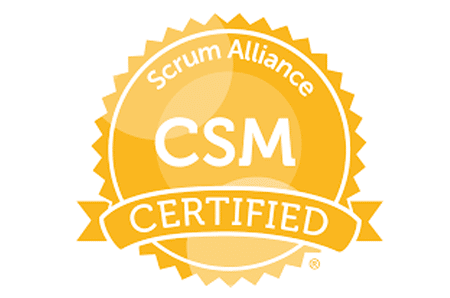ScrumMaster
The role of a ScrumMaster seems to have been miss-understood by many organisations, it is sometimes implemented as a part time role in which case it becomes nothing more than an admin and facilitation role at best. However the ScrumMaster is something completely different, it is both inward facing, helping to nurture and grow teams, it is also outward facing shaping the organisation around the team.
The ScrumMaster role has three main parts:
Serving the Team
You are not the team captain, you are more like the coach, standing-off the pitch helping the team identify what it wants to become, and then holding the mirror up to the team game by game (Sprint by Sprint) as you coach them towards their goals. Challenging the team to be the best that they can be. You help the team create an environment where they can be successful, protecting the team from outside distractions.
Serving the Product Owner
Often your Product Owner will need support as well, they may be new to the role and want support so that they can be the best that they can be. You may also help facilitate the Product Owner, customers and the team go from idea through to getting work ready to start Sprinting.
Serving the Organisation
As the team delivers every Sprint, all the stuff that doesn’t work very well in your organisation suddenly becomes more painful. You are now releasing continuously or at least every few weeks, rather than every few months, the problems (opportunities for improvements) suddenly become very visible. By resolving these organisational impediments you are helping change the organisation around you. Through the teams application of Scrum, you may be required to get involved with organisational development work, how you recruit, organisational structures and policies, line management, the list is endless.
To read more about the relationship between the ScrumMaster and team coaching read Tom Reynolds article Team Coaching and the Scrum Master Role
Key Competencies
In order to serve the team, the Product Owner and the wider organisation, you use a combination of the following competencies:
Agile/Lean Practitioner
This is about the breadth and depth of your lean and Agile knowledge. Questions like ‘how do we do X in an Agile way?’ will likely be directed at a ScrumMaster. This is a good place to start when you are new on your Agile journey, collecting tools, techniques, methods and frameworks, that may allow you to better serve the needs of your team, Product Owner or organisation. This is also about building up muscle memory, so that when the stress gets on ‘and it will’, you react in a way aligned with the Agile principles.
Facilitating
This is your ability to facilitate groups of people through a process to help them achieve their goals. As a facilitator you create a safe environment where people can go on a journey of discovery, navigating through conflict to build consensus towards outcomes and actions that they are prepared to own.
Coaching
Coaching is not about fixing people; it is about believing in people and helping them grow to be the best that they want to be. Through building a trusted relationship, you walk alongside people, using active listening and questions to broaden and deepen their thinking, helping them to move forward.
Facilitate Learning
Through teaching and mentoring you help people gain the knowledge and skills to be successful. It is common that as a ScrumMaster you will teach people about Agile and Lean concepts.
Advising
As an experienced ScrumMaster you will have gained useful knowledge and skills, which is especially useful when you are working with people with low competence and confidence in the Agile space.
The real skill is understanding when to use the appropriate competency: should I be advising now or should I be facilitating. As a team, product owner or other individual grow in experience, you will be able to make more use of the coaching and facilitating stances, in that way they own their own decisions, and it increases autonomy. When they don’t have knowledge then teaching, mentoring and advising may be more appropriate. Expect this to change over time.
The ScrumMaster is an Agile Coach who is usually focused on the team and the organisation around them. See the Agile Coaching Growth Wheel to dive deeper into these competencies.
What are the key attributes of a ScrumMaster?
When you are looking to see who will make a good ScrumMaster, look for someone with the right personal attributes, here are some of the things to look for:
- You want somebody with a growth mindset, who believes positive change is possible.
- A humble person, its not look at the project I have delivered, its look what the team has done.
- It takes a courageous person to challenge people within an organisation.
- Good emotional intelligence, somebody with great self awareness of the impact they have on others.
- A great communicator, able to convey ideas in many different ways.
- Somebody who is respectful in their interactions with others.
- The ability to be adaptable and change approach to meet the current situation.
- Somebody who is persistent and patient, as change can take time.
If you found this helpful, you may be interested in our other posts covering Scrum Roles in our Scrum Fundamentals series.


